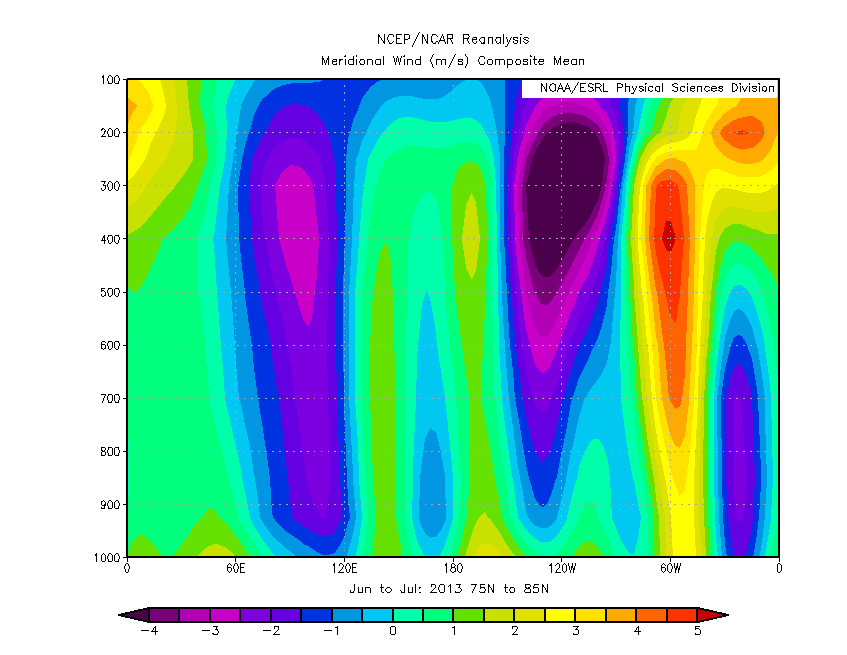UPDATE I've placed a question mark in the title of this thread, my reasons are explained
here. Basically I am in the process of questioning whether ice dynamics or the Arctic Dipole are the major driver to the post 2007 increase in annual range.
END UPDATE
The reason for the muted melt this year lies in the atmosphere. I should clarify muted, there are various indices and measures that clearly place 2013 in the set of post 2010 years, after 2010's volume loss. However the melt this year is not what it could have been, 2013 seems unlikely to challenge 2011 or 2007 and there is no realistic prospect of it challenging 2012.
Here is why.
First, here's the average sea level pressure for June to August (JJA) for the pre 2007 period.

Now the June to August average pressure for the period 2007 to 2012, it will become apparent why I've left out 2013 (aside from us not yet having August data).

These two patterns can be used as reference patterns using the numeric data behind them. Correlation can be carried out between these two reference patterns and each year's JJA average pressure maps. The result is two timeseries of correlations. A correlation ranges between -1 and 1, figures near zero show little agreement between the two patterns being correlated, figures near -1 show the pattern is the reverse of the reference pattern, figures near +1 show the pattern is a good match for the reference.
Here are the correlations for the last year, 2013 using the June/July average, not June to August.

2007 to 2012 show strong correlations, 2010 being reduced due to absence of the summer pattern in July (which is reflected in monthly anomaly changes for CT Area). These strong correlations and anti-correlations mark the post 2007 period out as unusual. However in 2013 June and July show negative correlations, the SLP pattern was reversed from the preceding six years.
The message is clear, take away the summer pattern that has been characteristic of the post 2007 summers, except 2013, and you don't get a massive melt, you get a muted melt. This is because the Dipole Anomaly it causes across the Arctic is absent.
Here is the atmospheric cross section and meridional (North/South) winds for June/July 2007 to 2012.

Note the red at 180deg (Chukchi) indicating strong northward inflow. Note the blue/purple outflow southwards between 120E and 30W.
Now 2013 June and July.

Note the near absence of inflow and outflow in the regions indicated above.
What 2013 is showing is that ice dynamics are not enough, the atmosphere has been playing a strong role in the enhanced melt seasons after 2007.
